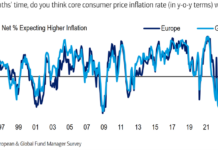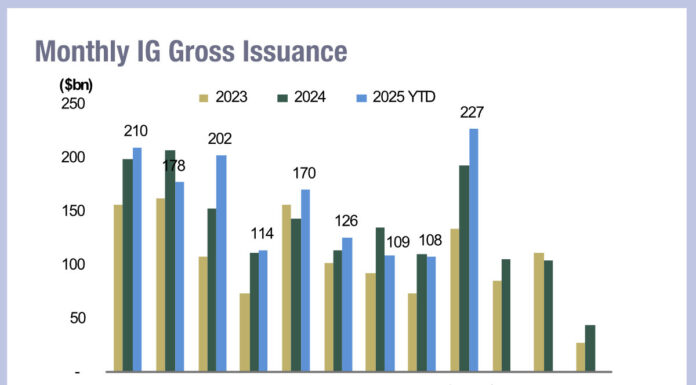A new paper by the Brookings Institute has highlighted reasons for concern around the growing US debt pile, and the dynamics that could affect the level of expected risk. Authored by directors Wendy Edelberg, Benjamin Harris, and Louise Sheiner, it flags the unsustainable direction of debt growth today, based upon projections that took it to 98% of gross domestic product in 2024, with the highest ever level having been hit post-WWII in 1946 at 106% of GDP driven for the most part by persistent primary deficits.

“We recognise there is great uncertainty about the repercussions of debt as a share of gross domestic product (GDP) rising to levels far exceeding historical precedents, and an analysis benchmarked to historical relationships in the macroeconomy may understate the risks of a fiscal crisis,” write the authors. “That said, our analysis suggests that, so long as the US maintains its strong institutions and a fiscal trajectory that isn’t vastly worse than the one currently projected, the chance of a severe and enduring fiscal crisis over the next few decades from debt accumulation appears quite low.”
The four scenarios that the paper warns of, as potentially impacting demand for US Treasuries – and thus creating a fiscal crisis by rapidly driving up interest rates while rapidly changing demand for Treasuries and creating a massive directional trade – are tied closely to the ability of US institutions to function effectively:
- Market disruptions unrelated to default: These have occurred before, as in 2020 during the Covid crisis, but a well-functioning Federal Reserve can typically mitigate any risks that this might create, the paper says, noting that a sell-off by China of US debt holdings would be too small to have a major impact.
- Political brinkmanship and missed payments: The paper plays down the potential impact of a binding debt limit by suggesting it would be manageable by the institutions of the US Treasury and the Fed, but the real risks sit with threats to default as have been made by US politicians recently on specific debt owned by China, for example, leading investors to demand higher risk premium that would raise Treasury rates, “If this triggered a persistent selloff, the spike in rates could be large enough to create a financial crisis.”
- Loss of inflation control: The scenario in which the US Fed uses inflation to erode the value of the debt, would likely lead markets to expect ever higher inflation going forward, note the authors, “likely increasing interest rates by more than the increase in inflation and thereby worsening the fiscal outlook.”
- Strategic default amid a dramatic deterioration in the fiscal outlook: The long-term fiscal outlook could deteriorate so significantly and so sharply that investors abruptly worry about some form of strategic default, leading them to abandon Treasuries until policymakers make conditions more stable.
The most likely scenario outlined here by the paper is that legislation balloons the debt via an elimination of taxes on corporate profits and Social Security benefits, for example, or the enactment of Medicare for All, or the provision of Universal Basic Income, leading investors to conclude that Congress had abandoned fiscal discipline.
“Although there is great uncertainty about the repercussions of debt as a share of GDP rising to levels far exceeding historical precedents, our analysis suggests that, so long as the US maintains its strong institutions and a fiscal trajectory that isn’t vastly worse than the one currently projected, the chance of a fiscal crisis from debt accumulation over the next few decades appears quite low,” conclude the authors.
©Markets Media Europe 2025













